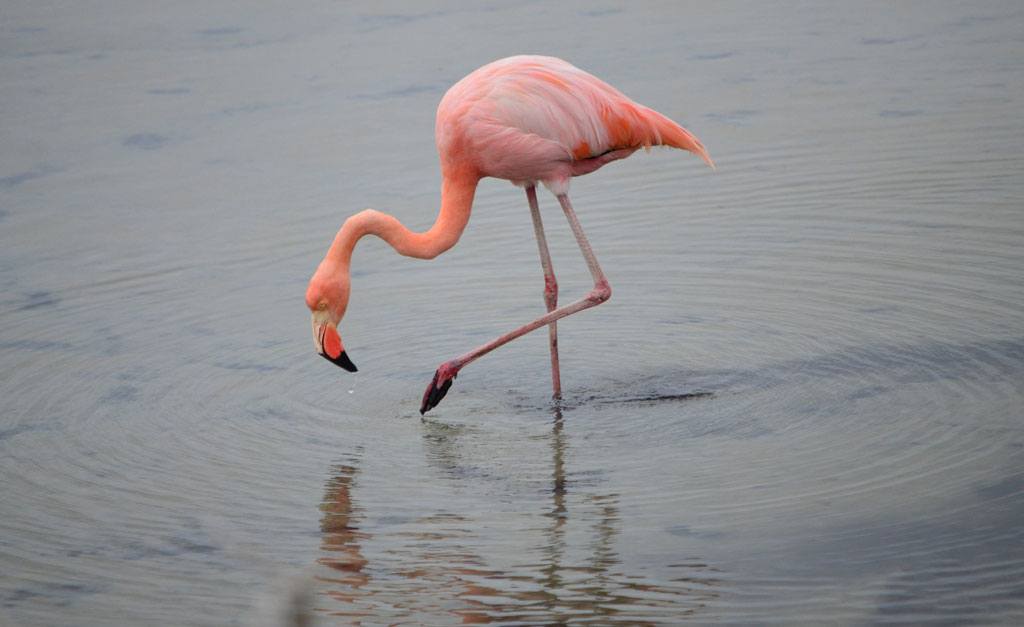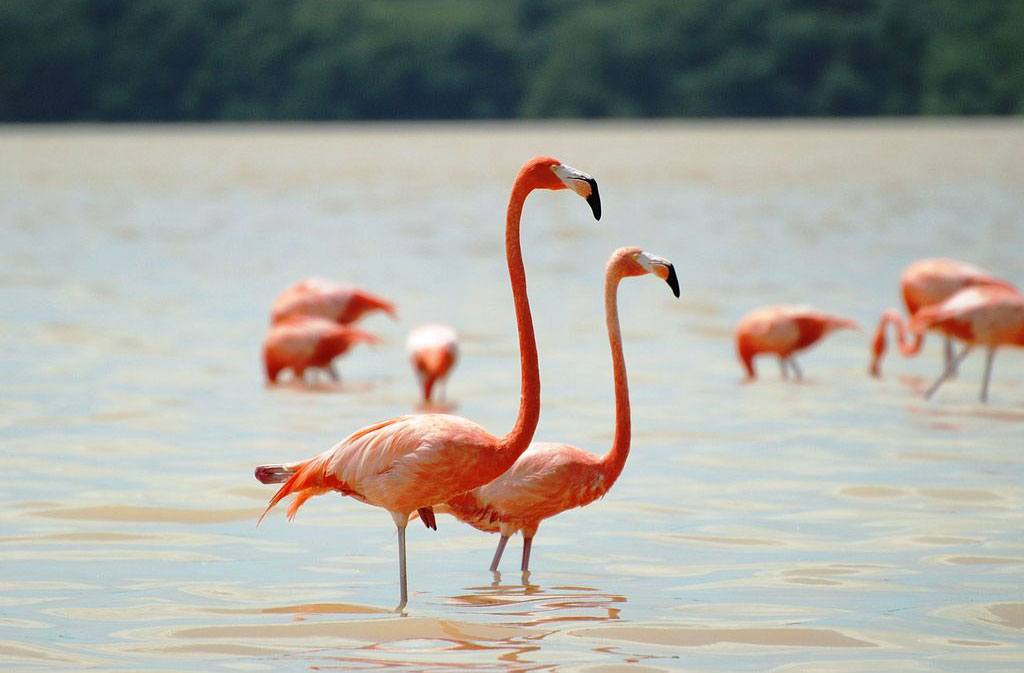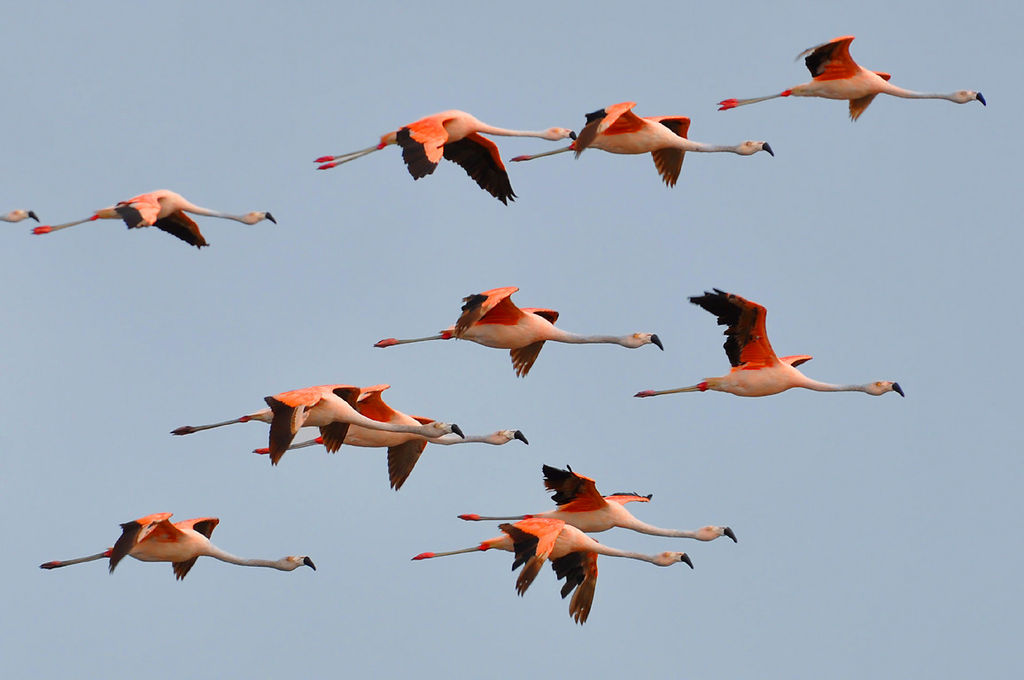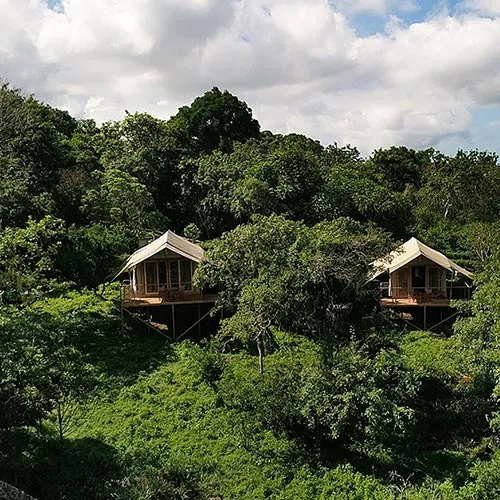Flamingos are among nature’s most dazzling creations. A tall, spectacularly pink bird with long, lanky legs, a sleek, curvaceous neck (among the longest legs and neck of any bird), and a very bizarre bill (which is specifically designed to sift food from muddy water). Any long look at this species really makes you wonder what evolutionary road it must have taken to reach this point.

Unlike many other species, evolution hasn’t really played much of a role here in the Galápagos, since the so-called ‘Galapagos flamingo’ is by most standards considered a Caribbean, or American Flamingo – although some consider it a specific Galapagos subspecies.

Other species of flamingo in places like Africa are astoundingly gregarious, breaking records in terms of the number of individuals found in one place. At the right place and time, you can see hundreds, if not thousands, huddled together in shallow lakes.
In the Galapagos, the experience is very different. If you get to see half a dozen flamingos on your Galapagos tour, you can consider yourself lucky. They are a very special, unique, addition to the Galapagos faunal community, and their lonely silhouette against the still water of a quiet lagoon is quite the poetic discovery.
Island hoppers
The population of flamingos in Galapagos, according to a recent census, numbers about 300 individuals, distributed throughout the islands (Isabela being the species’ most prominent residence), though flamingos are known to fly from pond to pond, and even from island to island, “commuting” between the islands of Isabela and Floreana. Some visitors are even lucky enough to see them in flight during their Galapagos tour, a very special sight, indeed: their uncanny pink form characterized by their elongated neck and extra-long legs outstretched to the maximum.

Flamingos feed off of crustaceans and aquatic vegetation and spend most of their time wading in shallows, prancing slowly along the water when not submerging their necks. A special Galapagos tour experience during breeding season is to see choreographed groups perform their elegant courtship dance, parading in unison, straightening their necks and striking elegant poses with their heads… The true flamenco dancers!
Flamingos can still be fairly common on brackish-water lagoons, including those at visitor sites and islands such as Dragon Hill or Bachas Beach on Santa Cruz, Cormorant Point on Floreana or the Humedales Reserve on Isabela.
Plan your Galapagos Vacation
See our Safari Holidays for our suggested extensions and recommended activities, or contact us for a tailored itinerary.
